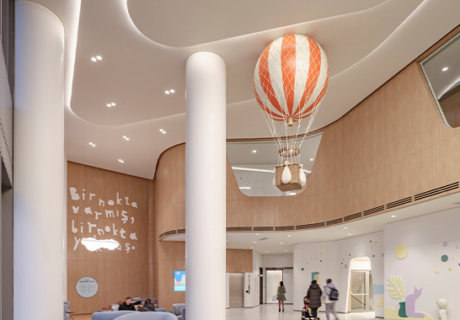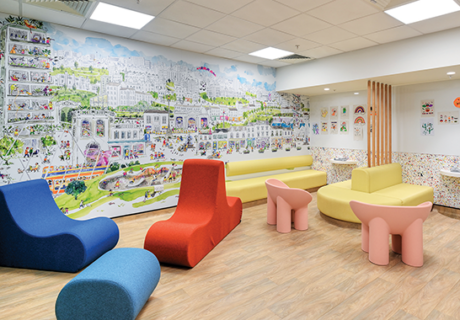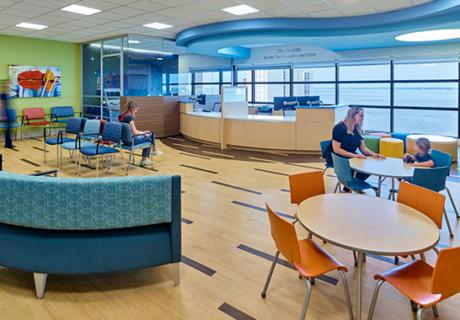FIRST LOOK: Children’s Hospital Of Philadelphia
Children’s Hospital of Philadelphia is developing a new, 8.5-acre clinical research campus directly across the Schuylkill River from the hospital’s main campus. The master plan for the site, positioned along South Street, a major city arterial, and Schuylkill Ave., a neighborhood street, optimizes the use of the site and addresses the needs of the new research facility. The inclusion of a series of linked public spaces provides amenity to the building’s occupants as well as to the adjacent community.
The master plan, prepared by Cooper Robertson, a New York-based architecture and urban design firm, determined that the site has capacity for more than 2 million square feet of development, which will be distributed among four buildings with an integrated public realm network, to be completed over several phases. The first building on the campus, the Roberts Center for Pediatric Research, designed by Ballinger and Pelli Clark Pelli, was recently completed and provides 466,000 square feet for clinical research and administrative uses. Research and administrative staff moved into the building in May of this year.
The open space framework, designed by Cooper Robertson, includes four distinct public spaces totaling 4.5 acres: South Street Plaza, Schuylkill Avenue Green, Bainbridge Place, and a Promenade overlooking the Schuylkill River. Custom-made wood benches lining raised planters provide seating under a canopy of shade trees, while a gentle and generous stairway provides access between the adjacent residential neighborhood and a bridge connection to the popular Schuylkill River Trail. Flexible seating and children’s play areas flank an open plaza that can host special events. Vehicular access is controlled via a “woonerf” design that calms traffic and gives pedestrians equal standing with cars.
Cutting-edge resiliency practices have been incorporated throughout to manage stormwater and protect against flooding. The design incorporates the collection, conveyance, and retention of the stormwater that hits the site, through a combination of green roofs, underground cisterns, and rain gardens that are expressed as landscape features.









